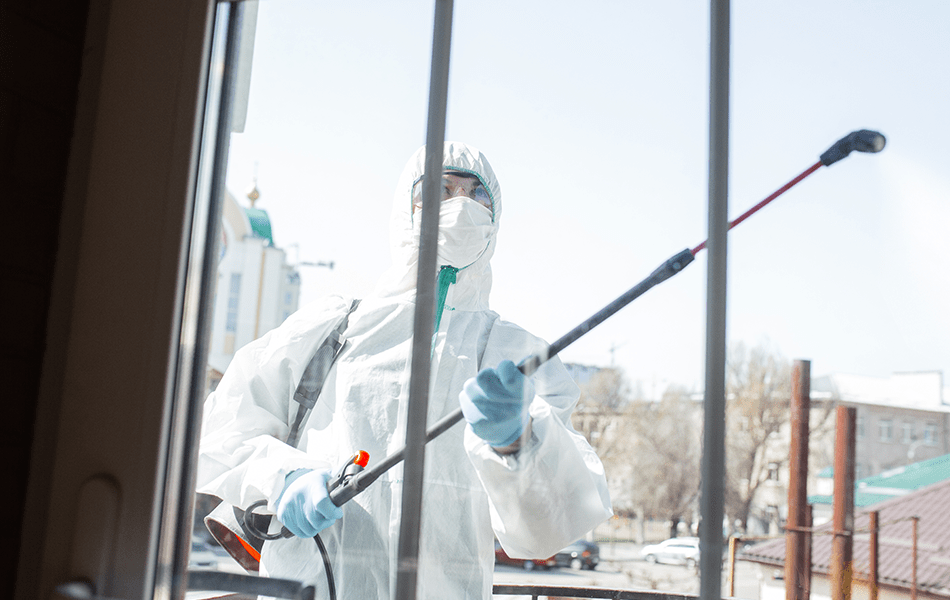Condo buildings offer advantages to residents. Yet, with so many people residing in one location, mishaps could occur that result in mold contamination.
What is a mold?
Molds are microscopic fungi, a class of creatures that also includes yeasts and mushrooms. Fungi have an exceptional capacity for spore production as they grow and reproduce quickly.
Any organic surface, moisture, and heat are all that are required for mold to thrive (like drywall and floors). Mold starts to grow under these circumstances within 24 to 48 hours. Mold is not only harmful to your health, but it is also destructive.
Is there a mold problem?
Mold is always present both outside and inside of commercial buildings. They enter the condo in a variety of ways, including through open windows or doors on objects like pets, food, or clothing. Mold damage inside the appliance is where the issue begins. It’s not a problem if there is some mold growing, say, on the window sill but not elsewhere. You can remove the mold on your own. Mold is an indication that there is too much moisture in your condo, which needs to be fixed. While less of an urgent problem, mold that is isolated inside walls and cannot easily come into contact with the tenants should nonetheless be dealt with by the condominium board.
Below are the common reasons what causes molds in a condo and how to prevent mold growth which is surely helpful when you encounter the same situations in your house and condo.
Why is mold growing in your home or condo?
If we give molds moisture and nourishment, they will proliferate. Molds cannot grow if we maintain a dry environment. Excessive moisture levels can be caused by leaks in the plumbing, walls, or roof; moisture produced by the occupants of the condo during daily activities like cooking, bathing, or washing clothing; or by the use of humidifiers to introduce moisture to the air. Condos become damp when there is insufficient airflow to remove the moisture.
What causes mold in a condo? in kitchen. The most frequent cause of mold in condo buildings is faulty kitchen appliances. Due to the fact that the water supply lines are frequently concealed, slow leaks from ice machines, refrigerators, dishwashers and other wet items sometimes go undiscovered. By the time you notice there is a problem, which is typically indicated by an odor or stain, it probably already poses a serious threat.
Second, condominium building’s worst dread is a pipe burst. Water can cascade down walls, floors, and ceilings as well as through stairwells and hallways in quantities of hundreds or even thousands of gallons. Dozens of units and common areas may be impacted by a plumbing leak or pipe burst. To remove the drywall, dry framing, and remaining floors as soon as feasible, swift action is required. Treating water as you would a fire is advised since acting quickly can help reduce damage.
Third, what causes mold in a condo is the moisture in the basement laundry areas. There is usually a communal washing room in the basement of most buildings, which is fine. Nevertheless, what’s also typical are basement storage spaces with boxes and other materials made of cellulose, which mold loves to grow on. Any basement is susceptible to mold formation due to the high humidity caused by the laundry.
Fourth, HVAC system is the next reason on what causes mold in a condo. HVAC stands for heating, ventilation, and air conditioning. It refers to the various methods for heating and cooling both residential and commercial structures, as well as transferring air between indoor and outdoor spaces. Buildings frequently have mold issues or outbreaks as a result of HVAC systems, particularly in the summer when condensation is produced by the air conditioning units. Mold grows in places where there is dampness. Additionally, given that mold spores can spread throughout the structure via the HVAC system, mold colonies are unavoidably going to grow.
Fifth, what causes mold in a condo is through the terrace drains. Drains become clogged by leaves and other debris. When that occurs, the only place for the water to go is into an adjacent flat. The weakest point of entry, which might be almost anywhere, is where water will enter. It is challenging to determine without appropriate testing. Keep your drains clear if you have a terrace.
Sixth, steam pipes. Particularly in older buildings, steam lines and aging radiators can develop undetected leaks inside the walls or ceiling tiles. The damage and mold growth may go unnoticed for weeks or even months due to the fact that steam leaks are typically concealed. Yet, a musty smell indicates the presence of mold growing nearby.
The second to last reason for what causes mold in a condo is through the building’s exterior. Another way water seeps through is pointing, or the concrete mortar that is frequently seen around bricks and windows in older buildings. Via weakened building components, rainwater may enter laterally and become trapped in the outside walls. As mold issues start to develop, it usually means that there is a lot more on the other side of the wall by the time you see something on your condominium wall.
The last common reason is flat roofs, which can frequently lead to problems. The flat roofs of many condominium complexes are susceptible to damage and sagging. Also, if they are not properly engineered, they won’t shed water as they ought to. Water then enters the flats below through the roof.
Tips and Techniques in Preventing Mold Growth
These are the tips and techniques that you need to know if you want to kill mold or any mold problem that you may encounter in your condo. To prevent mold growth you have to keep the condo dry. To grow, mold needs moisture. Mold growth can be stopped by managing the moisture and maintaining a dry condo. The next tip to prevent mold growth is to locate and repair water damage and roof leaks. Then, get rid of clutter and extra storage items. Another tip to prevent mold growth is to regularly clean and maintain the condo. Minimize the amount of material that is stored, especially unused items. Molds can develop on a wide range of materials, including paper, wood, and cloth, that attract dust and retain moisture.
Below are more tips that you can follow for specific areas of your condo for mold prevention or mold removal.
HVAC equipment
Another tip, do not humidify if you see mold or indications of moisture, such as water on your windows or wet spots elsewhere. Replace furnace filters and keep the space clean to prevent mold growth.
Laundry areas
Tips to prevent mold growth in this area include the following: first, you have to use the exhaust fans from your clothes dryers at all times. Next, every time you use the dryer, remove the lint. Then, do not dry laundry on a hanger indoors. Lastly, after using your washing machine and laundry tub, dry them.
Bathroom
Next tip, when you take a shower, turn on the bathroom fan. After you get out of the shower, let it run for a while. Next, keep moist surfaces clean and dry, such as the walls surrounding the bathtub and shower. Then remove the carpet from your bathroom if there is one, because wet carpet can start a mold issue. Inspect under the vanity sink for any water leaks and fix plumbing leaks immediately. Remove debris from drains to keep them clean.
In cleaning a drain, you have to: Add a few tablespoons of baking soda or chlorine bleach if it is available. Pour one cup of vinegar in. In the drain, insert the plug. Give the vinegar and baking soda about 20 minutes to work. Pour some clean water down the drain. Use a tiny plumbing snake if the drain remains blocked.
Kitchen
When cleaning the kitchen, use the exhaust fan that is over your stove. Maintain your drains clean and functional. Next, do the actions outlined in the Bathroom section above. The back of your refrigerator has a drip pan. To clean the drip pan, remove the refrigerator. Vacuum the dust from the refrigerator’s coils at the same time. Make sure there are no leaks by looking under the kitchen sink.
Closets and bedroom
Cleaning the bedroom area is very important to prevent mold growth. Get rid of your unused clothing and other stocked items. It’s simpler to circulate fresh air and more difficult for mold to form in your closets and bedrooms when they are clean.
Check common areas
Another tip for mold prevention is to regularly check the potential problem areas in your condo. Areas inside walls and exterior walls. During the warmer months, a dehumidifier aids in lowering moisture levels in the unit. When the dehumidifier is on, shut the windows. Then vacuum regularly. Use a moist mop to tidy up hard surfaces. Reduce the amount of indoor potted plants because it’s easy for mold to grow in soil due to its moisture.
Can mold cause health problems?
Mold contamination can lead to health concerns. Material damage: materials eventually deteriorate due to staining or discoloration. Cardboard and paper with mold deteriorate over time. The fabrics are ruined. Due to the chemicals and mold spores that mold releases when it grows indoors, there may be a health risk.
The health effects of mold can range from being inconsequential to causing allergic reactions and illness, according to health professionals, depending on the type of mold present in a residence, the amount and degree of exposure, and the occupant’s health status.
After knowing all about molds, you may consider the tips and techniques above and check areas in your condo for early prevention.





